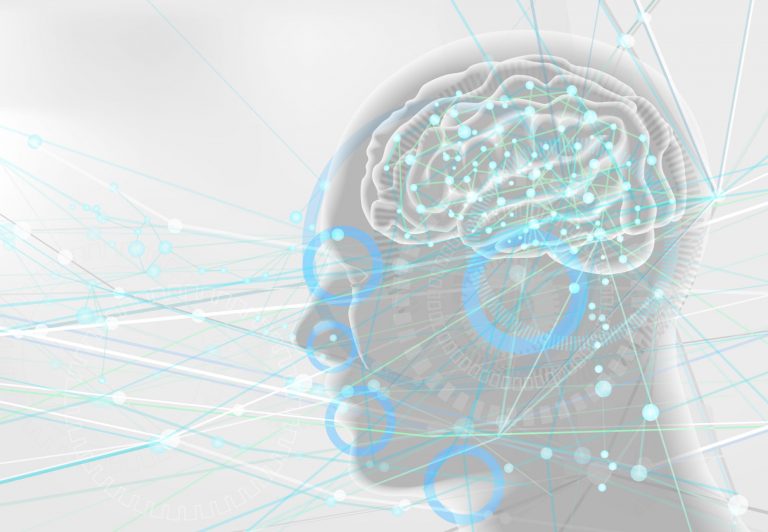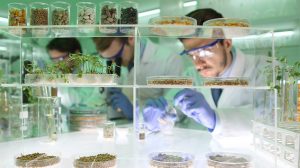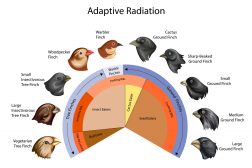Sensory Systems

A sensory system consists of sensory receptors that receive stimuli, neural pathways that conduct this information to the brain, and the brain processing the information.
Table of Contents
A sensory system is a part of the nervous system consisting of sensory receptors that receive stimuli from the internal and external environment, neural pathways that conduct this information to the brain and parts of the brain that processes this information. The information is called sensory information and it may or may not lead to conscious awareness. If it does, it can be called sensation.
Receptors
Specialized endings of afferent neurons or separate cells that affect the ends of afferent neurons. They collect information about the external and internal environment in various energy forms-and energy that activates a receptor is called a stimulus. Stimulus energy is first transformed into graded or receptor potentials and the process by which a stimulus is transformed into an electrical response is called stimulus transduction.
Each receptor is specific to a certain type of stimulus, which is called its adequate stimulus. Specificity also exists in the range of stimulus energies that the receptor responds to. However, a receptor can be activated by a nonspecific stimulus if its intensity is sufficiently high.
Receptor potential
Gating of ion channels in specialized receptor membranes allows a change in ion fluxes across the membrane, generating a graded receptor potential. The graded potential initiates an action potential, frequency and NOT magnitude of which is determined by the magnitude of the graded potential. The magnitude of the receptor potential is determined by stimulus strength, the summation of receptor potentials, and receptor sensitivity. The decrease in sensitivity with a constant stimulus is called adaptation.
Neural Pathways in Sensory Systems
A single afferent neuron with all its receptor endings makes a sensory unit. When stimulated, this is the portion of the body that leads to activity in a particular afferent neuron is called the receptive field of that neuron.
Afferent neurons enter the CNS, diverge and synapse upon many interneurons. These afferent neurons are called sensory or ascending pathways and specific ascending pathways if they carry information about a single type of stimulus. The ascending pathways reach the cerebral cortex on the side opposite to where their sensory receptors are located.
Specific ascending pathways that transmit information from somatic receptors and taste buds go to the somatosensory cortex (parietal lobe), the ones from eyes go to the visual cortex (occipital lobe), and the ones from ears go to the auditory cortex (temporal lobe).
Olfaction is NOT represented in the cerebral cortex.
Nonspecific ascending pathways consist of polymodal neurons and are activated by sensory units of several types. These pathways are important in alertness and arousal.
Cortical association areas, lying outside primary cortical sensory areas, participate in a more complex analysis of incoming information such as comparison, memory, language, motivation, emotion, etc.
Primary Sensory Coding
Sensory systems code 4 aspects of a stimulus:
- Stimulus Type (modality). All receptors of a single afferent neuron are sensitive to the same type of stimulus.
- Stimulus Intensity. An increased stimulus results in a larger receptor potential,, leading to a higher frequency of action potential. Stronger stimuli also affect a larger area and recruit a larger number of receptors.
- Stimulus Location. Coded by the site of the stimulated receptor. The precision of location, called acuity, is negatively correlated with the amount of convergence in ascending pathways, size of the receptive field, and overlap with adjacent receptive fields. The response is highest at the center of the receptive field since receptor density is the highest there. Using lateral inhibition, a process by which information from neurons at the edge of a stimulus is inhibited, acuity can be increased.
- Stimulus Duration. Rapid adapting receptors respond rapidly at the onset of stimulus but slow down or stop firing during the remainder of a stimulus (they adapt quickly). They are important in signaling rapid change. Slow adapting receptors maintain their response at or near the initial level of firing through the duration of the stimulus and are important in signaling slow changes.
Somatic sensation
Sensations from skin, muscles, bone are initiated by somatic receptors. Receptors for visceral sensations are similar.
Touch pressure
Mechanoreceptors in the skin are of 2 types, rapid and slow adapting ones.
Posture and movement
Muscle-spindle stretch receptors, occurring in skeletal muscles respond to the absolute magnitude and the rate of muscle stretch. Mechanoreceptors in joints, tendons, ligaments, and skin also participate.
Temperature
Thermoreceptors are of two types, one that responds to an increase and the other that responds to a decrease in temperature.
Pain
Nociceptors respond to intense mechanical deformation, excessive heat, etc. which cause tissue damage and many chemicals that are released by damaged cells or cells of the immune system. If the initial stimulus of pain leads to an increased sensitivity to subsequent painful stimuli it is called hyperalgesia. If descending pathways inhibit the transmission of pain stimuli, it leads to a suppression of pain and this is called stimulation-produced analgesia. If both visceral and somatic afferent converge on the same interneuron, excitation of one can lead to excitation of the other, leading to the pain being felt at a site different from the actual injured part. This is called referred pain. Stimulating non-pain afferent fibers can inhibit neurons in the pain pathway and this therapy is called transcutaneous electric nerve stimulation (TENS). Rubbing on a painful area and acupuncture work for the same reason.
Vision
Optics
Receptors in the eye are sensitive to only the visible light of the electromagnetic spectrum. Lens and cornea focus on impinging light rays into an image at the fovea centralis area of the retina. Light passing from air into the cornea is bent and the curved surface of cornea plays a major role in focusing. Changes in lens shape make adjustments (accommodation) for distance. Lens shape is controlled by zonular fibers that are in turn controlled by the smooth ciliary muscle. To focus on distant objects, the lens is pulled into a flattened oval shape. For near vision, the pull is removed to make the lens more spherical and provide additional bending for light rays.
Cells of the lens lose their organelles and are therefore transparent. The lens becomes progressively opaque as newer cells replace older ones, which accumulate in the lens. This is called a cataract.
If the lens loses its elasticity (due to age) and cannot assume a spherical shape, it leads to loss of near vision, and this is called presbyopia. If images of far objects focus at a point in front of the retina, the eye is nearsighted or myopic and far vision is poor. If images of near objects focus at a point behind the retina, the eye is farsighted or hyperopic and near vision is poor. If the lens or cornea is not smooth, it is called astigmatism. The lens separates an anterior chamber filled with aqueous humor and a posterior chamber filled with vitreous humor. If aqueous humor is formed faster than it is removed, it results in increased pressure within the eye. This can cause irreversible blindness with the death of optic nerves and it is called glaucoma. The pigmented, opaque iris that has a central hole, the pupil, controls the amount of light entering the eye. The iris has smooth muscles, innervated by autonomic nerves. Stimulation of the sympathetic nerves dilates the pupil to let in more light when light is poor and stimulation of the parasympathetic nerves constricts the pupil to allow in less light when light is bright.
Photoreceptor cells
Rods – sensitive and responding to low light and cones – less sensitive and responding to bright light. There are three kinds of cones containing red-, green-, or blue-sensitive pigment. Photoreceptors contain photopigments, which absorb light. There are 4 photopigments, rhodopsin in the rods, and one in each of the 3 cone types. Each photopigment contains an integral membrane protein, opsin, which binds a light-sensitive chromatophore molecule. The chromatophore – retinal (a derivative of vitamin A) is the same in all the 4 photopigments. The opsin is different in each type of photopigment, absorbing light at different wavelengths of the spectrum. The light activates retinal, causing it to change shape and triggering a hyperpolarization in the bipolar cells, which synapse with the photoreceptor cells. After its activation, retinal changes back to its resting shape by light-independent mechanisms and the photoreceptor cell is depolarized
Neural pathways
Photoreceptor cells synapse with neurons called bipolar cells which, in turn, synapse with ganglion cells that produce the first action potentials in the chain. Axons from ganglion cells form the optic nerve, which crosses over to the opposite side of the optic chiasm.
Sound transmission in the ear
- Outer Ear (Pinna/Auricle) – Directs and amplifies sound waves.
- External Auditory Canal –the ear canal leading from the outside to the middle ear cavity
- Tympanic membrane (Eardrum) – Vibrates at the frequency of sound waves.
- Middle Ear Cavity – Filled with air. Has a movable chain of 3 bones, the malleus, incus, and stapes that couple and amplifies the vibrations in the tympanic membrane to the
- Oval window– a membrane-covered opening separating the middle ear and the
- Inner Ear (cochlea)
- Scala vestibuli – Filled with fluid
- Cochlear duct – Lined by the basilar membrane upon which sits the organ of Corti containing the receptor cells.
- Organ of Corti
Receptor cells of the organ of Corti, the hair cells, are mechanoreceptors that have hairlike stereocilia. The vibration of the basilar membrane, with which the hair cells are attached, stimulates the hair cells and the pressure waves are transformed into receptor potentials.
Neural pathways
Afferent neurons from the hair cells form the cochlear nerve.
Hearing
The entire audible range extends from 20 to 20,000 Hz. Human ears can tolerate sounds not exceeding 85 decibels. Exposure to prolonged loud sounds can damage hearing over time. Noise-induced hearing loss, for instance, is caused by exposure to a frequency range of 4000-6000 hertz. Damage to ear function can be prevented by reducing noise. This can be done by moving away from the source of the noise and using ear protection. In places where noise cannot be avoided, exposure can be reduced by applying noise-mitigation strategies, such as installing specialized soundboards for wall sheathing, acoustical tiles for ceilings, or insulation within interior walls. (Ref. 1)
Vestibular system
A series of fluid-filled tubes in the inner ear that connect with each other and the cochlear duct containing hair cells that detect changes in motion
2 Parts:
- Semicircular Canals – Detect angular acceleration during rotation of the head along the three axes.
- Utricle and Saccule – Provide information about linear acceleration and changes in head position relative to gravity.
Vestibular information
Information from hair cells in the vestibular apparatus is transmitted to the parietal lobe and is integrated with information from other parts of the body, leading to a sense of posture and movement. Unexpected inputs from the vestibular system lead to vertigo or motion sickness.
Chemical tastes
Taste
Taste buds found on the tongue respond to 4 basic modalities, sweet, sour, salty, and bitter. Each group has a distinct transductional system. Organized into independent pathways but a single receptor cell may respond to more than one taste category in various degrees.
Smell
The odor is related to the chemical structure of a substance. Olfactory receptor cells lie in the olfactory epithelium in the upper part of the nasal cavity. These cells have several long, non-motile cilia, which contain binding sites for olfactory stimuli. Each cell contains one type of receptor. Axons of olfactory receptor cells of the same specificity synapse together. Information is passed into the olfactory cortex in the limbic system.
References:
- Acoustic Protection Factsheet: In Walls & Windows. (2019, October 8). Building Biology Institute. https://buildingbiologyinstitute.org/free-fact-sheets/acoustic-protection/
You will also like...

Lotic Communities & Animals
A running water environment offers numerous microhabitats for many types of animals. Similar to plants, animals in lotic..

The Evolution of Cell Organelles
The nucleus containing the genetic material, DNA, and the mitochondria, well-identified as the "powerhouse of the cell",..

Regulation of Biological Systems
Regulation of Biological Systems tutorials are focused on the modulation of biological systems from cell to population l..

Photosynthesis – Photolysis and Carbon Fixation
Photosynthesis is the process that plants undertake to create organic materials from carbon dioxide and water, with the ..

Principles of Hormonal Control Systems
Hormones are essential in the regulation of the activity of the various biological systems of the human body. The ineffi..

Adaptive Radiation
The diversification of several new species from a recent ancestral source, each adapted to utilize or occupy a vacant ad..
